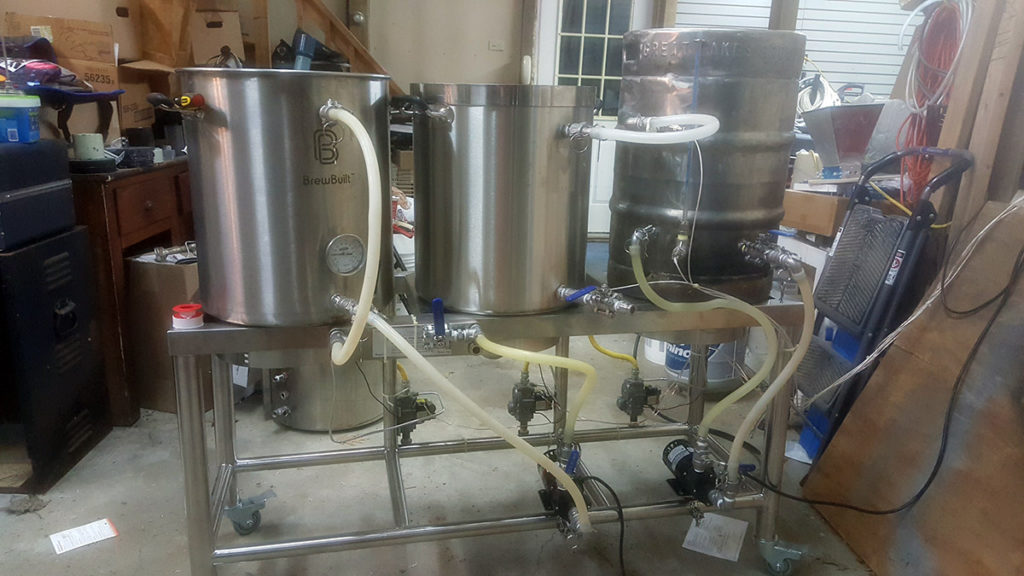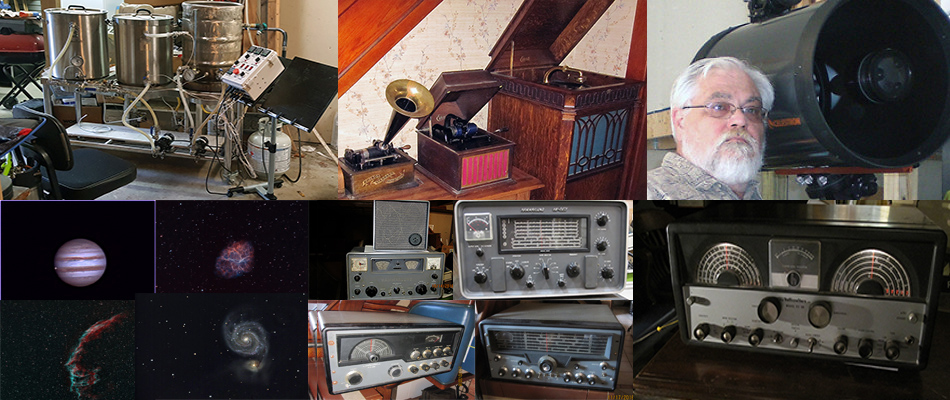
Had another burst of activity tonight despite high temps and humidity. Got two PIDs autotrained, both pumps mounted, and most hoses built and connected. I would have finished the hoses but have misplaced some of the connectors I had stashed. I’ll dig them out tomorrow (I hope). Still need to train the third PID, mount the chiller RTD sensor, make up the last of the hoses, and make some changes that occured to me during tonight’s tests. Those will involve punching a couple more kettle holes but I have everything already set out to do that so it will be easy. I still haven’t found my old counterflow chiller so I’ll be using the plate chiller, which I hope to learn to trust as I use it. I always meant to switch over to it, but I trusted the counterflow chiller and hated to mess with that which works well.
Next stage, after everything works as it is, is to rig the (heavily) used 20 gallon Blichmann G1 pot I picked up for not much. It has LOTS of excess holes in it, including three 2″ triclamp fittings that were used for electric elements. I will have to cap a bunch of holes first, but the plan is to make it into a boil hettle so I can increase my max batch size. Then I can convert the existing 15G boil jettle into a hot liquor tank and get rid of the converted keg I am now using. I want to do it partly for esthetic reasons (I don’t like the looks of convered Sanke kegs), partly for ethical reasons (there is no easy way to tell whether a given Sanke keg was ever stolen but it is certain that some were), but mostly because I much prefer the fuel efficiency of a flat bottomed kettle. Once I eventually switch to natural gas it won’t be so big a deal, but I don’t know how much propane this rig is going to consume per brew session. The old rig rig used about 3-4 pounds per brew but it had smaller burners. I haven’t performed any meaningful delta-T tests but I observed about three degrees/minute heat rise in the MLT while recirculating through a HERMS heat exchanger that was exposed to room temperature air rather then to water at operating temperature. It should do better in service – and the other two burners are mounted closer to the kettles than that one so they should also do better. I never got three degrees/minute out of the old rig so this should be a nice improvement.
